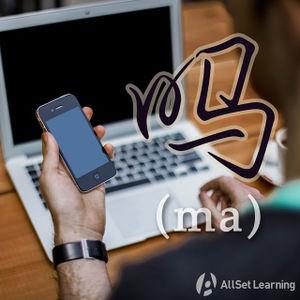Difference between revisions of "Questions with "le ma""
| Line 44: | Line 44: | ||
* 作业 你 写 完 <em>了 吗</em>?<span class="pinyin">Zuòyè nǐ xiě wán <em> le ma</em>? </span> <span class="trans">Have you finishing doing homework? </span> | * 作业 你 写 完 <em>了 吗</em>?<span class="pinyin">Zuòyè nǐ xiě wán <em> le ma</em>? </span> <span class="trans">Have you finishing doing homework? </span> | ||
* 这 个 电影 你 看 <em>了 吗</em>?<span class="pinyin">Zhège diànyǐng nǐ kàn <em>le ma</em>? </span> <span class="trans">Have you seen this movie? </span> | * 这 个 电影 你 看 <em>了 吗</em>?<span class="pinyin">Zhège diànyǐng nǐ kàn <em>le ma</em>? </span> <span class="trans">Have you seen this movie? </span> | ||
| − | * 我 的 邮件 你 收到 <em>了 吗</em>? <span class="pinyin">Wǒ de yóujiàn nǐ shōudào <em>le ma</em>? </span> <span class="trans">Have you received my | + | * 我 的 邮件 你 收到 <em>了 吗</em>? <span class="pinyin">Wǒ de yóujiàn nǐ shōudào <em>le ma</em>? </span> <span class="trans">Have you received my email? </span> |
</div> | </div> | ||
Revision as of 07:41, 1 March 2017
-
Level
-
Similar to
-
Used for
-
Keywords
Asking questions about completed actions will involve using both 了 (le) and 吗 (ma). These are simply added to the end of a sentence or statement. This means you might see questions with 了 (le) and 吗 (ma) in different structures.
Contents
General Usage
Structure
Subj. + Verb + Obj. + 了吗?
Examples
- 你 吃饭 了 吗? Did you eat?
- 老板 走 了 吗? Did the boss leave?
- 你男朋友 找到 新 工作 了 吗? Has your boyfriend found a new job yet?
- 妈妈,你 昨天 给 我 打电话 了 吗? Mom, did you call me yesterday?
- 你 今天 去 上班 了 吗? Did you go to work today?
With a Topic
Structure
Topic + (Subj.) + Verb + 了吗?
NOTE: in this structure, the topic is also the object for the Verb.
Examples
- 晚饭 你 吃 了 吗? Did you eat dinner?
- 衣服 你 洗 好 了 吗? Have you finished washing the clothes?
- 作业 你 写 完 了 吗? Have you finishing doing homework?
- 这 个 电影 你 看 了 吗? Have you seen this movie?
- 我 的 邮件 你 收到 了 吗? Have you received my email?
Notice that in these examples the object is introduced first as a topic.
Finally, please note that this pattern is nothing more than the combination of the Expressing completion with le pattern and the Yes - no questions with ma pattern.
See also



